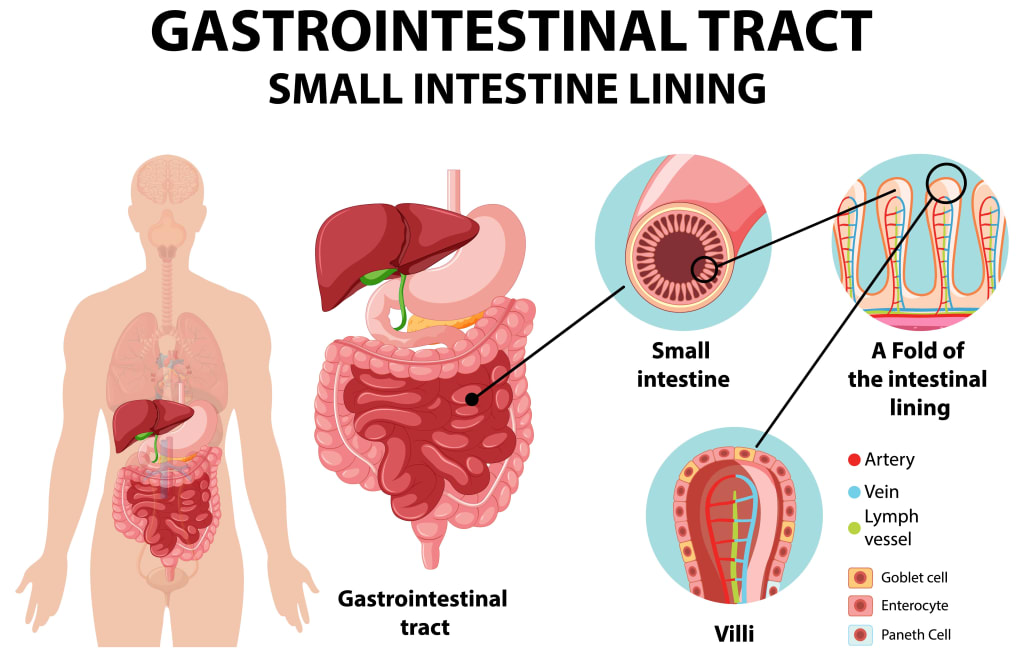Understanding the gastrointestinal system: A guide to the organs, functions, and common conditions
Understanding the gastrointestinal system

The gastrointestinal (GI) system, also known as the digestive system, is a complex network of organs and tissues that work together to break down food, absorb nutrients, and eliminate waste from the body. Understanding the structure, function, and common conditions of the GI system can help individuals make informed decisions about their diet, lifestyle, and overall health. In this article, we will provide a comprehensive guide to the GI system, including its organs, functions, and common conditions.
Dr. Nachiket Dubale is an outstanding Gastroenterologist in Pune who is passionate about treating all gastrointestinal issues such as gastroenterology and liver disease. He makes a significant contribution to analytic and therapeutic enteroscopy. His areas of expertise include upper endoscopy, pancreatolgy, and minor internal diseases. Gastroenterology Colonoscopy GI Endoscopy/ERCP Sigmoidoscopy for Therapeutic Purposes.
Organs of the Gastrointestinal System
The gastrointestinal system (GI) is made up of numerous organs that work together to digest food and absorb nutrients. The primary organs of the Gastrointestinal system are as follows:
Mouth: The mouth is the first organ of the GI system, where food is broken down by chewing and mixed with saliva, which contains enzymes that begin the process of digestion.
esophagus: The esophagus is a muscular tube that links the mouth and stomach. It transports food from the mouth to the stomach by a process known as peristalsis, which is the repetitive contraction of esophageal muscles.
Stomach: The stomach is a sac-like organ that mixes and grinds food with digestive juices, including hydrochloric acid and enzymes. This process breaks down food into a semi-liquid mixture called chyme.
small intestine: The small intestine is a long, narrow tube connecting the stomach to the large intestine. It absorbs the majority of nutrients and has little finger-like extensions called villi that improve the surface area for absorption.
Large intestine: The large intestine, also known as the colon, absorbs water and electrolytes from the chyme, forming solid feces that are eventually eliminated from the body.
Functions of the Gastrointestinal System
The primary function of the GI system is to break down food into nutrients that can be absorbed and utilized by the body. The GI system also plays a crucial role in the elimination of waste from the body. The following are the primary functions of the GI system:
Ingestion: The act of ingesting food through the mouth.
Mechanical Digestion: The process of breaking down food into smaller pieces through chewing and mixing with digestive juices.
Chemical Digestion: The process of breaking down food into smaller molecules using digestive enzymes.
Absorption: The process of taking in nutrients, vitamins, and minerals from the digested food through the walls of the small intestine.
Elimination: The process of expelling waste materials from the body through the rectum and anus.
Common Conditions of the Gastrointestinal System
The GI system can be affected by a variety of illnesses, ranging from simple digestive issues to major diseases. The following are some of the most frequent GI system conditions:
Acid reflux: When stomach acid runs back into the oesophagus, causing heartburn and discomfort.
IBS (irritable bowel syndrome) is a chronic disorder that causes abdominal pain, bloating, constipation, and diarrhoea.
Inflammatory bowel disease (IBD): A group of chronic diseases that cause inflammation in the digestive tract, including ulcerative colitis and Crohn's disease.
Gastroenteritis: A viral or bacterial infection that causes inflammation of the stomach and intestines, leading to diarrhea, vomiting, and stomach pain.
Constipation: A condition characterised by infrequent or difficult bowel movements.
Hemorrhoids: Swollen veins in the anus and rectum that can cause discomfort, bleeding, and itching.
Celiac disease is an autoimmune ailment characterised by the body's inability to tolerate gluten, a protein present in wheat, barley, and rye.
Diverticulitis: An inflammation of the small pouch.
About the Creator
Enjoyed the story? Support the Creator.
Subscribe for free to receive all their stories in your feed. You could also pledge your support or give them a one-off tip, letting them know you appreciate their work.





Comments
There are no comments for this story
Be the first to respond and start the conversation.